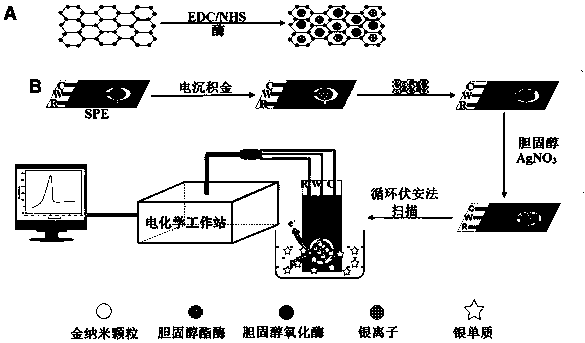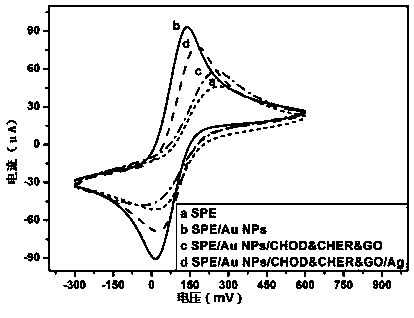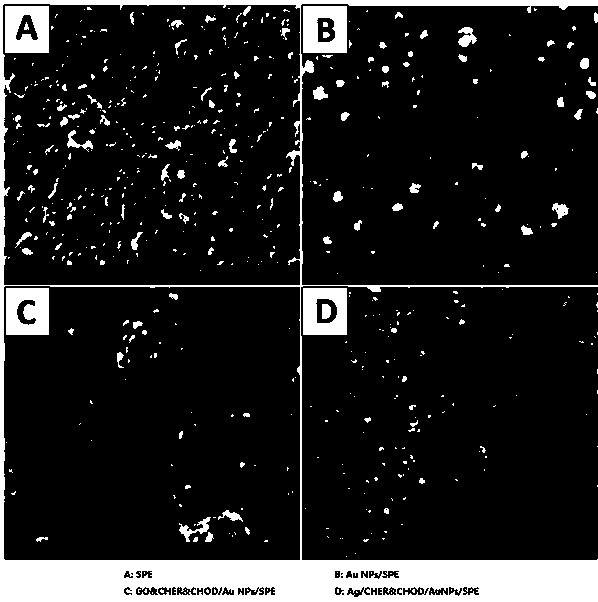Method for detecting cholesterol by synergistically catalyzing sliver deposition through enzyme and graphene
A cholesterol and graphene technology, applied in the measurement device, material electrochemical variables, material analysis by electromagnetic means, etc., can solve the problems of expensive instruments, time-consuming technical requirements, complicated operation, etc., to achieve low background interference and ensure stability. , the effect of large specific surface area
- Summary
- Abstract
- Description
- Claims
- Application Information
AI Technical Summary
Problems solved by technology
Method used
Image
Examples
Embodiment Construction
[0038] The present invention will be described in detail below in conjunction with the accompanying drawings and specific embodiments.
[0039] A method for the detection of cholesterol by synergistically catalyzing silver deposition with enzyme and graphene, the detection principle see figure 1 .
[0040] The implementation steps are as follows:
[0041] 1. Electrode pretreatment: Before using the screen-printed electrode, first place it in 0.5 mol / L H 2 SO 4In the solution, use the cyclic voltammetry scanning method to scan, the scanning voltage is -0.2 V ~ 1.0 V, and scan 10 times within this range; after the scanning, the electrode is washed with clean water and dried for later use;
[0042] 2. Electrode modification and enzyme immobilization: Put the activated screen-printed electrode into 5 mL of 0.01% HAuCl 4 In this method, the deposition was performed for 120 s while stirring with a magnetic stirrer, and the deposition potential was -0.5 V. After the constant pote...
PUM
 Login to View More
Login to View More Abstract
Description
Claims
Application Information
 Login to View More
Login to View More - R&D Engineer
- R&D Manager
- IP Professional
- Industry Leading Data Capabilities
- Powerful AI technology
- Patent DNA Extraction
Browse by: Latest US Patents, China's latest patents, Technical Efficacy Thesaurus, Application Domain, Technology Topic, Popular Technical Reports.
© 2024 PatSnap. All rights reserved.Legal|Privacy policy|Modern Slavery Act Transparency Statement|Sitemap|About US| Contact US: help@patsnap.com










